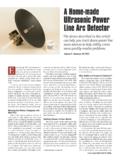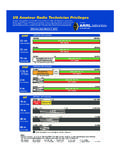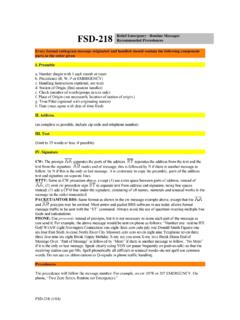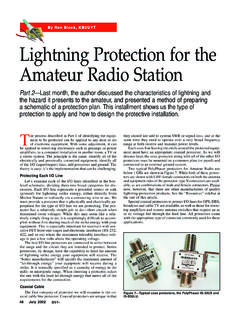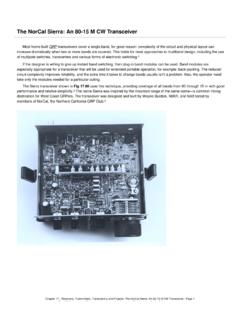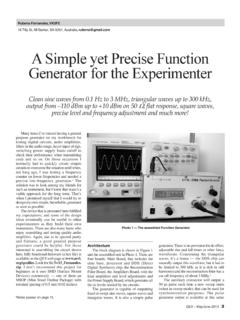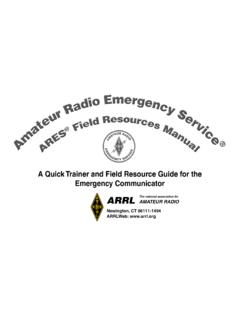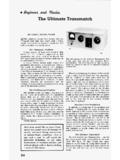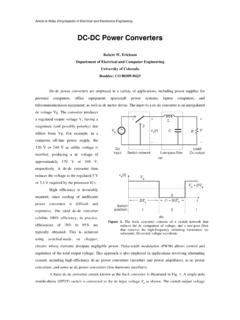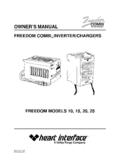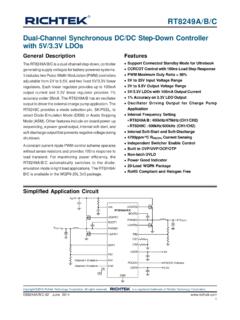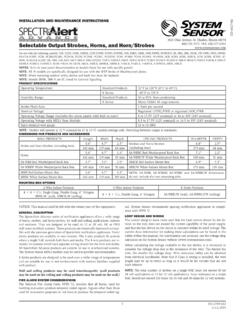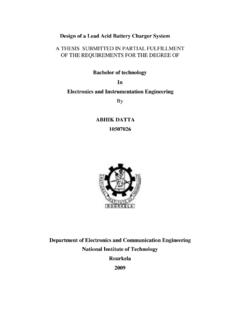Transcription of W1TS VINTAGE TRANSMITTER - ARRL - Home
1 W1TS VINTAGE TRANSMITTER Ralph E. Taggart WB8 DQT INTRODUCTION The inspiration for this project manual was nostalgia! I wanted a VINTAGE , vacuum tube TRANSMITTER to fire up for the annual ARRL Straight Key Night on New Year s Eve (2011). Since I generally operate QRP, having a VINTAGE rig that fell within the definition of a QRP TRANSMITTER (a maximum of five watts output) would allow me to stay legitimate with respect to QRP contacts while reveling in the tube technology of my misspent youth! There are a great many beginner/low- power TRANSMITTER designs that appeared in QST between say 1965 and 1970, all of which can be located and downloaded via the Archive Periodical Search available to ARRL members on the League website ( ).
2 The project I settled on was a very basic but solid design presented by Don Mix (W1TS) in the October 1968 issue of QST. This little gem has a maximum input of 10-12 watts so will typically produce around 4 or five watts of output a vacuum tube QRP TRANSMITTER ! If you have worked mine (which is set up for 4-watts out), you know how nice it sounds and you may be tempted to build one. If your personal history includes building tube-type gear somewhere in the 50 s or 60 s, all you will likely need is a copy of the QST PDF download and a soldering iron! If you came into Amateur Radio in the age of solid state devices, you may still be tempted to build one, but there are a lot of new old things you will have to learn.
3 This project manual should help. If you are interested in building another period rig, there is still a lot you can learn, so give this package a read! CIRCUIT DESCRIPTION I have included my own version of the schematic for this TRANSMITTER because I think it is easier to understand than the original. You can follow the discussion using the QST version if you wish. 6C4 Oscillator. The 6C4 triode (V1) is set up as an unturned oscillator by feeding back the output from the plate into the tube s grid input. Since there is no tuned plate circuit, the tube would be expected to produce power over a very wide range of frequencies from audio up through RF. However, a quartz crystal (X1) cut for the desired frequency of operation is placed in the feedback loop, limiting the output of the oscillator to that frequency.
4 The 47 ohm resistor limits the current that flows through the crystal and helps to stabilize the oscillator stage. The oscillator will readily function on any Amateur band between 80 and 20 meters. The 1 mH choke isolates the RF output from the power supply bus. The oscillator is keyed (turned on and off) by grounding the cathode. When the key is open, no current flows and there is no RF output from V1. Closing the key allows the stage to draw power and oscillation commences. The .01 mF capacitor at the cathode provides RF bypassing while the 100 ohm resistor and mF capacitor shape the keyed waveform. Most of the output from the oscillator is fed back from the plate to the grid via the mF feedback capacitor, but a small percentage is routed to the final amplifier (V2) via the mF coupling capacitor.
5 This minimizes the loading of the oscillator by the final output stage and further contributes to oscillator stability. A simple but significant modification that I made to the oscillator stage is the addition of two 51V 5W series connected 1N5369 zener diodes in the plate circuit. These two diodes, along with the 16K dropping resistor from the 275V bus, essentially regulate the oscillator plate voltage to 100V, key-up or key-down. This modification is absolutely necessary. The TRANSMITTER , as originally designed, will work just fine with VINTAGE crystals but keying is completely unacceptable with modern crystals. The problem is excessive crystal current (by modern standards), causing crystal heating and excessive frequency shift ( chirp ) when the oscillator is keyed.
6 This true even with the FT243 crystals sold by Brian Carling (AF4K), since these are actually high-quality HC49 crystals enclosed by VINTAGE FT243 holders! I have ten of Brian s crystals for 40 meters and none were useable with the stock TRANSMITTER and 275V on the plates (4-5 watts output). With the 6C4 plate voltage regulated to 100V, nine of the crystals yield perfectly acceptable keying! 5763 Final Amplifier. The RF signal from V1 is applied to the grid of V2, a 5763 pentode. Like the oscillator stage, a 1 mH RF choke is used to decouple the RF output of V2 from the plate supply . Screen voltage is derived from the HV bus via a 6800 dropping resistor. power from the amplifier plate is coupled to a Pi-network consisting of L1 and the TUNE and LOAD capacitors.
7 The output tuned circuit suppressed the radiation of harmonic energy and matched the high-impedance plate circuit to 50 ohms. The 1 mH choke at the output of the pi-network is a safety feature. If the input capacitor ( mF) to the network were to fail, high-voltage DC would be applied to the transmission line, antenna, and the various plate circuit components. Should this occur, the choke provides a DC ground connection, shorting the power supply output and blowing the fuse! S2 provides simple manual transmit/receive (T/R) switching . Like the oscillator, the operation of the final amplifier is controlled by keying the amplifier cathode circuit. With the key open, V2 draws no current and is essentially off.
8 When the key is closed, the cathode of V2 is grounded through the 100 cathode resistor and the tube generates RF output. The cathode current (essentially equivalent to the plate current drawn by V2) is measured by measuring the voltage drop across the 100 cathode resistor using a voltmeter made up of a 0-1 mA panel meter and a 10K series resistor. With this arrangement, the meter will read mA with 10V input. The voltage drop across the cathode resistor is a function of the current passing though the resistor and is easily calculated using Ohm s Law: E = IR If, for example, the final were drawing 50 mA ( ), the voltage drop across the 100 cathode resistor would be: E = x 100 = At that current the meter will thus indicate half-scale ( mA) and the actual cathode current is the meter value multiplied by 100.
9 This particular metering scheme could be replaced by a basic 100 mA current meter in series with the keyed line from the final cathode (+ on the tube side, - on the key side), but such meters are harder to find (and more expensive) than the very basic 0-1 mA panel meter used here. power supply High Voltage Circuits. The center-tapped high voltage secondary of the power transformer drives a conventional full-wave rectifier network with an effective 66 mF (two 33 mF capacitors in parallel) filter capacitor. The B+ voltage at the output pretty-much determines the output from the TRANSMITTER . With the Hammond 269EX transformer specified the HV output will be 275-280V and you can expect 4-5 watts of RF output.
10 Two 1 meg 1 watt resistors in parallel are used to create a 500K -2 watt bleeder resistor. This resistor will not draw much current at a nominal 275V (about mA/1/8 watt), but it will serve to discharge the high-voltage filter capacitors once the power supply has been turned off. It will take about one minute to discharge the capacitors to a relatively safe voltage. You can use four of the 1 meg resistors in parallel to reduce the discharge time to ~30 seconds with no impact on the operation of the power supply . Filament Circuits. The Hammond transformer has a filament winding (green leads) with no center-tap. This is the voltage required by the filaments of both the 6C4 and the 5763 final.
